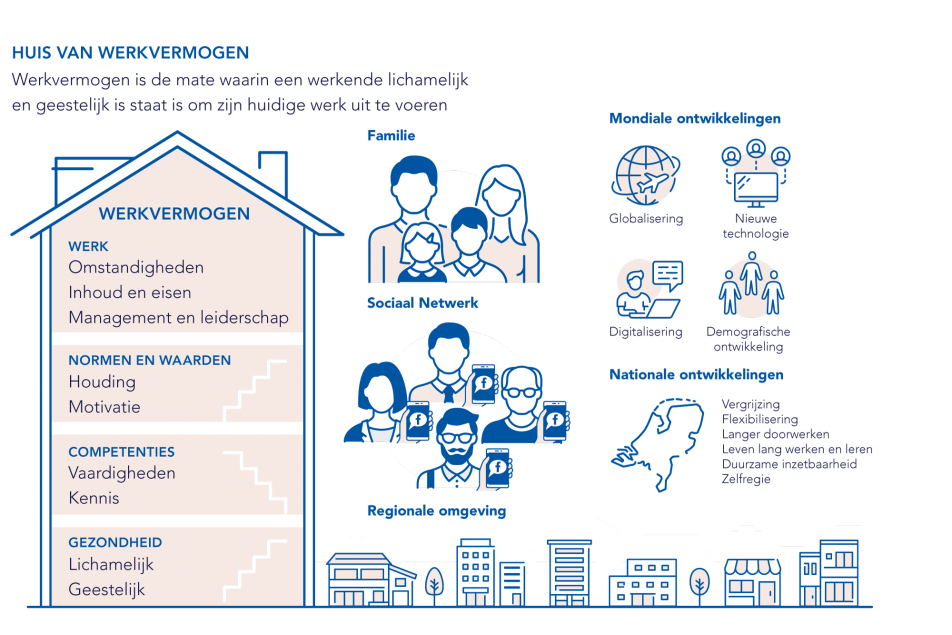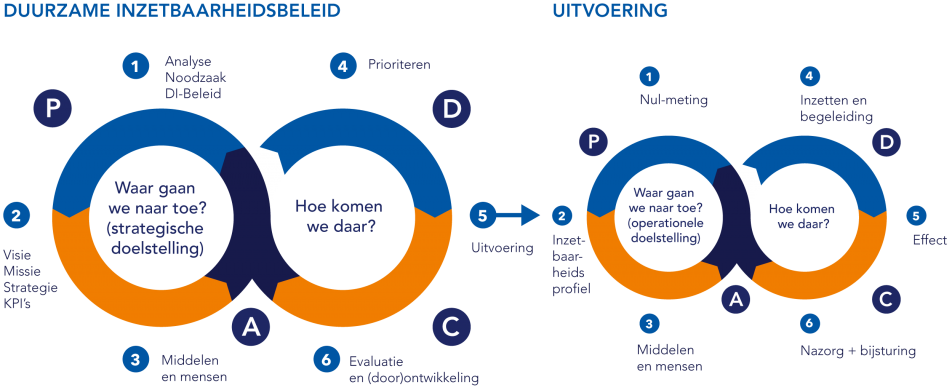There are many definitions of sustainable employability and much is also published about it by a variety of parties, all approaching the subject from their own interests and perspectives. Perhaps that’s why many employers can’t see the forest for the trees and get caught up in the tangle of hundreds of topics that can all be subsumed under the heading of sustainable employability.
According to TNO, the definition of sustainable employability is as follows: ‘Sustainable employability (DI) means that workers are not only employable here and now, but that they can and want to continue to work in the longer term.’
So really a catch-all term that incorporates many facets of HR. It is not only about health and vitality, but also about issues such as competence, reward, training, development and performance management. Also, the entry (recruitment) and exit phases have important interfaces with sustainable employability.
In practice, we continue to see a growing need for advice. We also recognize the struggle, as described above. We would like to share the experiences we have had in the meantime in this article. We describe a roadmap of the route to a widely supported sustainable employability policy using the principles of establishing strategic HR policies. And more importantly, by applying the principles of continuous improvement (Plan-Do-Check-Act), sustainable employability can be implemented as a continuous process in the organization. Our objective: to provide a concrete and pragmatic roadmap.




